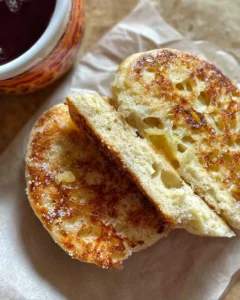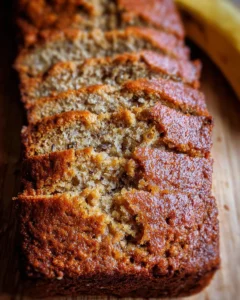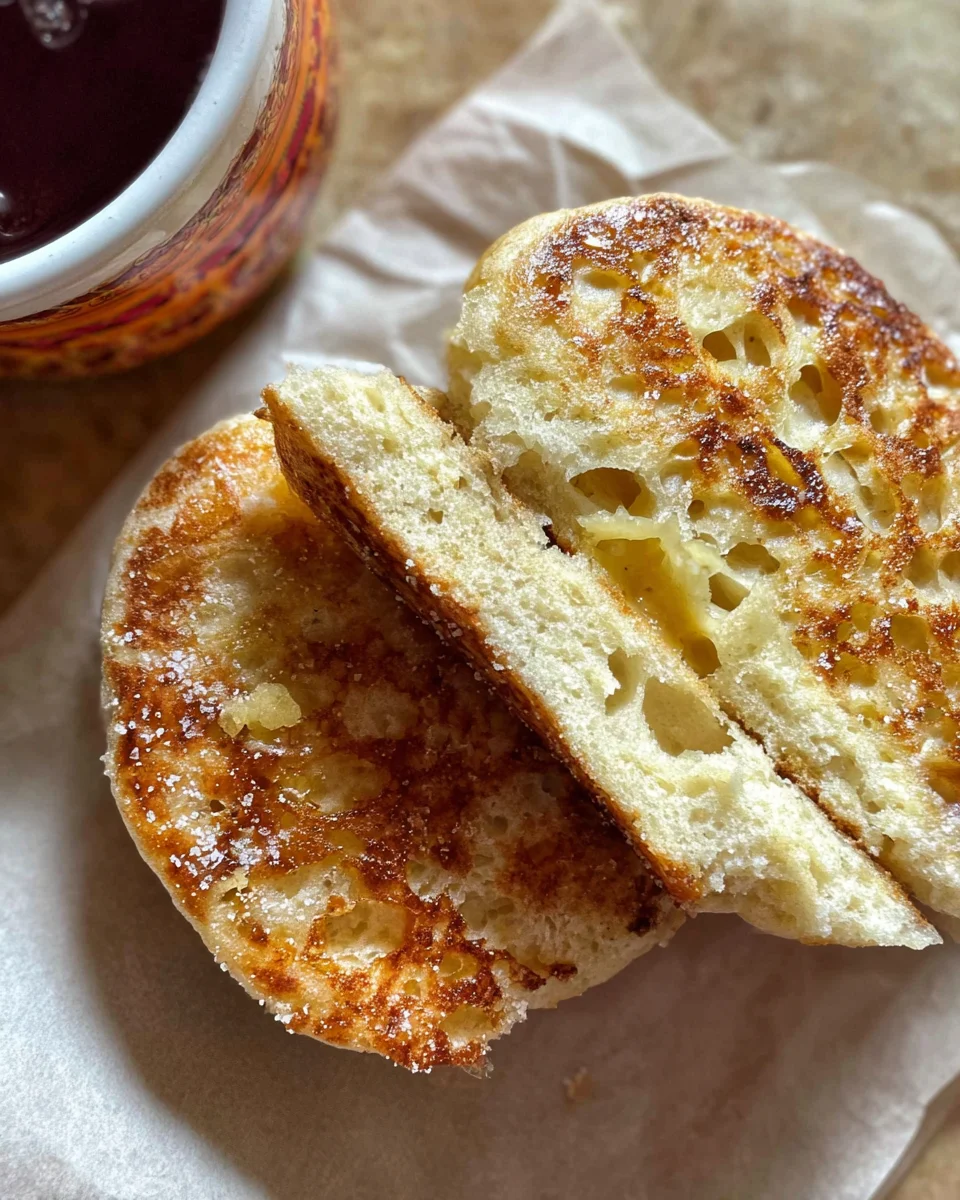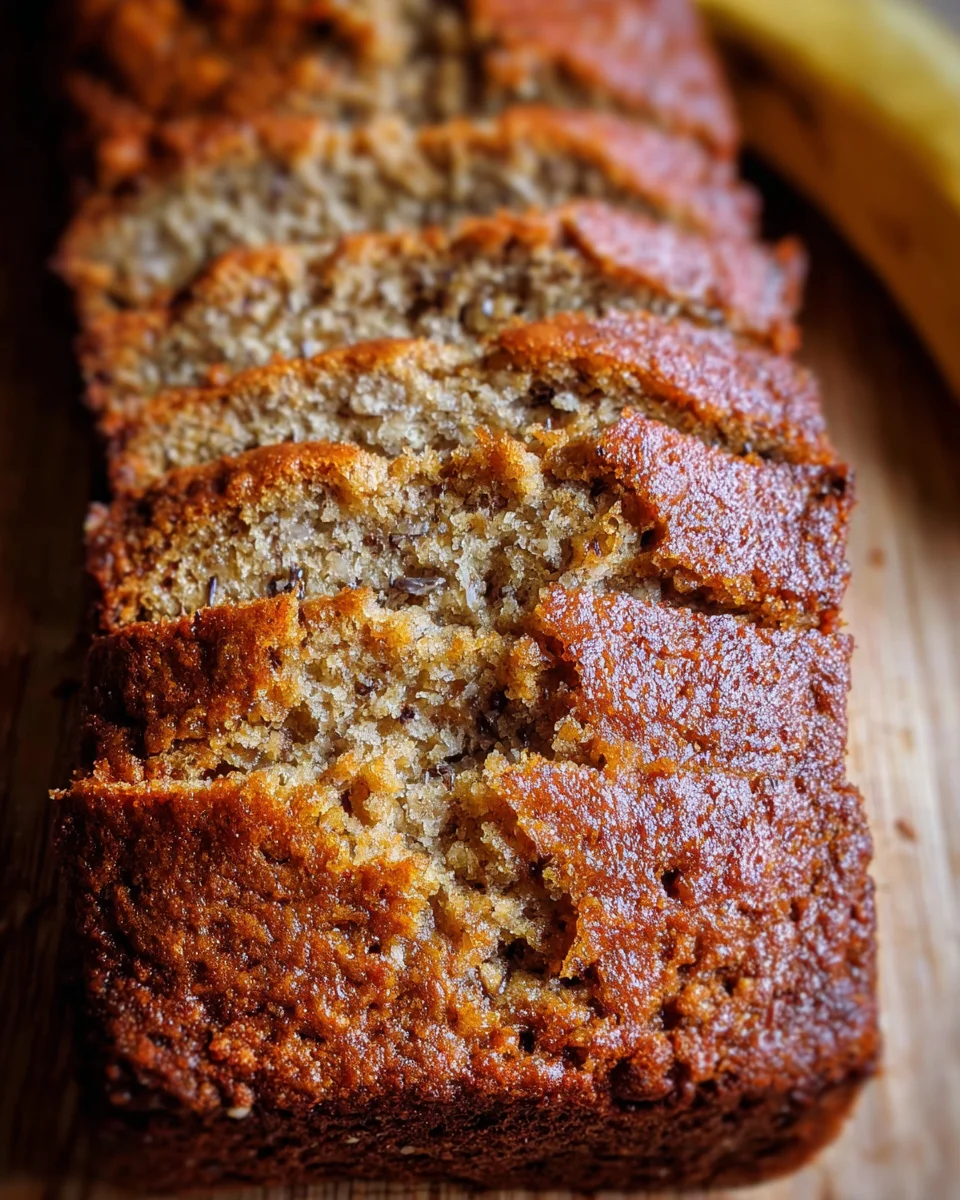This Sourdough Japanese milk bread is a delightful treat that boasts an incredibly soft texture and rich flavor, making it perfect for breakfast or any time of day. The unique tangzhong method ensures that each loaf remains fluffy and moist, while the slow fermentation process enhances the buttery taste. Whether you enjoy it plain, toasted, or as part of a sandwich, this bread is versatile enough to impress at any occasion.
Why You’ll Love This Recipe
- Unmatched Softness: The tangzhong technique creates a tender crumb that melts in your mouth.
- Rich Flavor: A longer rise develops complex flavors that elevate your baking.
- Versatile Uses: Perfect for toast, sandwiches, or simply enjoyed with butter and jam.
- No-Knead Method: This recipe makes it easy to create gourmet bread by hand without the fuss of kneading.
- Perfect for Sharing: Bake a loaf to share with family and friends; it’s sure to please everyone!
Tools and Preparation
To make this Sourdough Japanese milk bread, having the right tools on hand will make the process easier and more enjoyable.
Essential Tools and Equipment
- Mixing bowl
- Whisk
- Measuring scale
- Dough scraper
- Loaf pan
- Kitchen towel
Importance of Each Tool
- Mixing bowl: A large bowl allows plenty of space for mixing ingredients without spills.
- Measuring scale: Accurate measurements ensure consistent results every time you bake.
- Dough scraper: Helps in handling the dough efficiently and keeps your workspace tidy.
Ingredients
For the Starter
- 30 g fed and active sourdough starter, 100% hydration
For the Tangzhong Mixture
- 60 g milk, warm
- 60 g bread flour
- 23 g bread flour
- 60 g water
For the Main Dough
- 275 g bread flour
- 50 g granulated sugar
- 4 g salt
- 60 g milk, warm
- 1 egg
- 60 g butter, room temperature
- 1 egg (for egg wash)
- 1 tbsp milk (for egg wash)
How to Make Sourdough Japanese milk bread
Step 1: Prepare the Tangzhong
- In a saucepan over medium heat, whisk together 60 g warm milk, 60 g water, 60 g bread flour, and 23 g bread flour until smooth.
- Cook gently until the mixture thickens to a pudding-like consistency.
- Remove from heat and let it cool to room temperature.
Step 2: Mix the Dough
- In a mixing bowl, combine your fed sourdough starter with the cooled tangzhong mixture.
- Add in 275 g bread flour, 50 g sugar, 4 g salt, 60 g warm milk, and 1 egg.
- Stir until fully combined; then add in room temperature butter.
Step 3: Bulk Fermentation
- Cover the bowl with a kitchen towel and let it rise at room temperature for about 4–6 hours until doubled in size.
- Stretch and fold the dough every hour to strengthen its structure.
Step 4: Shape the Dough
- Once risen, turn out the dough onto a floured surface.
- Gently flatten it into a rectangle shape; then roll it tightly into a log suitable for your loaf pan.
Step 5: Second Rise
- Place your shaped dough into a greased loaf pan.
- Cover again with a kitchen towel and allow it to rise for another hour or until puffy.
Step 6: Bake
- Preheat your oven to 350°F (175°C).
- Mix one egg with one tablespoon of milk; brush this mixture over the loaf for a golden finish.
- Bake for about 30 minutes or until golden brown on top.
Enjoy your freshly baked Sourdough Japanese milk bread! The soft texture is perfect for any occasion or meal.
How to Serve Sourdough Japanese milk bread
Sourdough Japanese milk bread is incredibly versatile and can be served in various delightful ways. Whether for breakfast, a snack, or dessert, this fluffy bread complements many flavors.
Toast with Toppings
- Avocado Spread: Smash ripe avocado with a sprinkle of salt and pepper for a creamy topping.
- Nut Butter: Spread almond or peanut butter for a protein-packed snack.
- Cream Cheese and Jam: A classic combination that adds sweetness and richness.
Sandwiches
- Egg Salad Sandwich: Use the soft texture to hold together a flavorful egg salad.
- Turkey and Cheese: Layer slices of turkey and cheese for a simple and satisfying lunch.
- Vegetable Wrap: Fill with fresh vegetables and hummus for a healthy option.
Sweet Treats
- French Toast: Dip slices in an egg mixture and cook until golden for a delicious breakfast treat.
- Bread Pudding: Transform leftovers into a warm, comforting dessert with custard and spices.
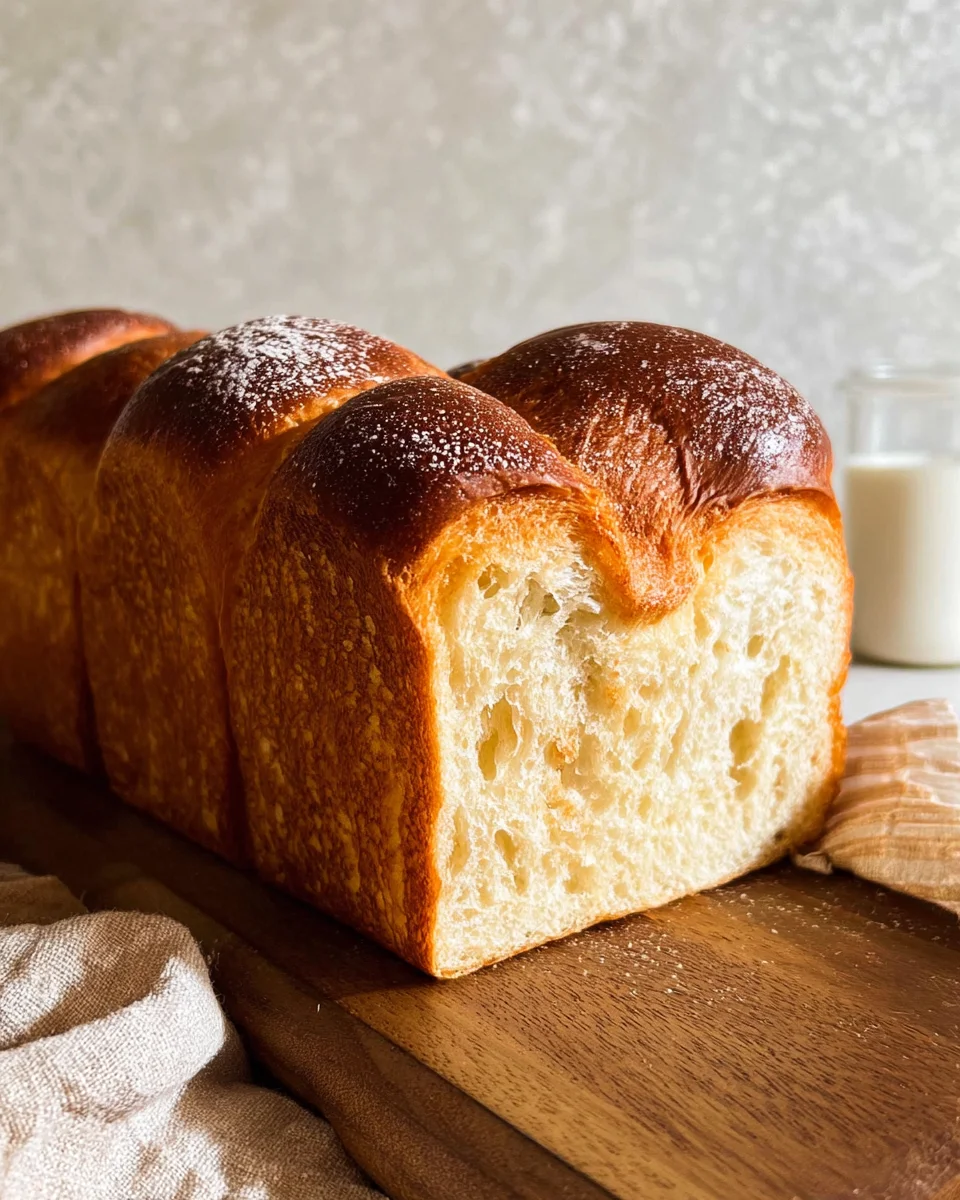
How to Perfect Sourdough Japanese milk bread
To achieve the ultimate fluffiness in your sourdough Japanese milk bread, follow these expert tips. Each step enhances the texture and flavor of the loaf.
- Use Fresh Ingredients: Always use active sourdough starter and fresh flour for the best results.
- Temperature Matters: Ensure your liquids are warm but not hot; this helps activate the yeast without killing it.
- Allow Enough Rise Time: Be patient with the rising process; longer rises develop better flavor and texture.
- Don’t Skip Tangzhong: This method adds moisture, making your bread incredibly soft and fluffy.
- Experiment with Kneading Times: While this is a no-knead recipe, folding the dough gently can improve gluten development.
Best Side Dishes for Sourdough Japanese milk bread
Sourdough Japanese milk bread pairs well with many side dishes that enhance its flavor. Here are some great options:
- Miso Soup: A warm bowl of miso soup complements the bread’s softness perfectly.
- Pickled Vegetables: Crunchy pickles add brightness and contrast to each bite.
- Grilled Sausages: Savory sausages offer a hearty side that balances the sweetness of the bread.
- Salad Greens: Fresh greens tossed in light dressing provide a refreshing accompaniment.
- Roasted Vegetables: Sweet roasted carrots or squash create a lovely flavor pairing.
- Fruit Compote: A sweet fruit compote makes an excellent topping or side dish for breakfast.
Common Mistakes to Avoid
Making sourdough Japanese milk bread can be tricky, but avoiding common mistakes will ensure a successful bake. Here are some pitfalls to steer clear of:
- Incorrect starter activity: Using a sourdough starter that isn’t fed or active can lead to poor rise and flavor. Always feed your starter and let it bubble before use.
- Skipping the tangzhong method: This step is crucial for achieving the soft texture characteristic of Japanese milk bread. Make sure to prepare the tangzhong correctly for best results.
- Not measuring ingredients accurately: Baking is a science, and imprecise measurements can affect the outcome. Use a kitchen scale for accuracy.
- Overproofing the dough: Allowing your dough to rise too long can result in a collapsed loaf. Follow the timing guidelines closely for optimal results.
- Ignoring temperature control: Temperature affects yeast activity. Ensure your ingredients are at room temperature, especially the milk and butter, for even mixing.
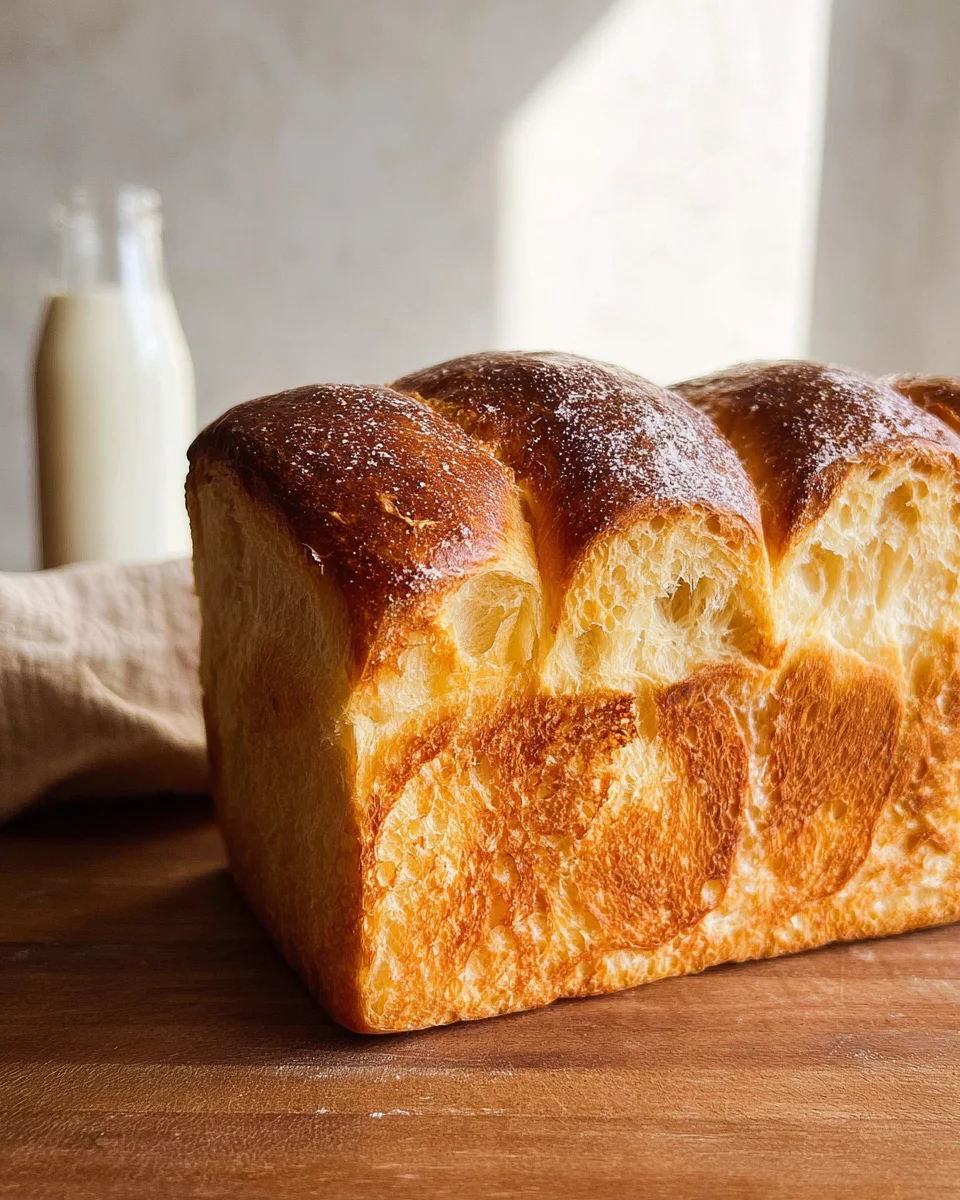
Storage & Reheating Instructions
Refrigerator Storage
- Duration: Store your bread in the refrigerator for up to 1 week.
- Containers: Use an airtight container or wrap it tightly in plastic wrap to keep it fresh.
Freezing Sourdough Japanese milk bread
- Duration: You can freeze this bread for up to 3 months.
- Containers: Wrap slices individually in plastic wrap, then place them in a freezer-safe bag.
Reheating Sourdough Japanese milk bread
- Oven: Preheat your oven to 350°F (175°C). Wrap the bread in foil and heat for about 10-15 minutes until warmed through.
- Microwave: Place a slice on a microwave-safe plate. Heat for 10-15 seconds; check frequently to avoid toughening.
- Stovetop: Heat a skillet over medium-low heat. Add a little butter and toast each side for 1-2 minutes until golden.
Frequently Asked Questions
What makes Sourdough Japanese milk bread different from regular bread?
Sourdough Japanese milk bread uses a tangzhong method which adds moisture, resulting in an exceptionally soft texture that lasts longer than traditional recipes.
Can I use all-purpose flour instead of bread flour?
Yes, while using all-purpose flour may yield slightly different results, you can substitute it. The texture will be less chewy compared to using bread flour.
How do I know when my sourdough starter is ready?
Your sourdough starter is ready when it doubles in size within 4-6 hours after feeding and has plenty of bubbles on the surface.
Is Sourdough Japanese milk bread healthy?
This bread contains simple ingredients and offers natural fermentation benefits compared to commercial breads, making it a healthier option overall.
Can I customize this recipe?
Absolutely! You can add herbs or spices like cinnamon or nutmeg for flavor or incorporate fillings like chocolate or fruit for variety.
Final Thoughts
Sourdough Japanese milk bread is not only delicious but also incredibly versatile. Its soft texture makes it perfect for breakfast or as a base for sandwiches. Feel free to customize with your favorite flavors or fillings! Give this recipe a try and enjoy its comforting qualities at home!
Sourdough Japanese Milk Bread
Sourdough Japanese milk bread is a delightful fusion of traditional sourdough and the beloved Japanese tangzhong method, yielding an incredibly soft and fluffy loaf. This recipe produces a rich, buttery flavor that enhances your breakfast or snack time. With its versatile nature, this bread is perfect whether enjoyed plain, toasted with toppings, or transformed into gourmet sandwiches. The no-knead approach makes it accessible for bakers of all skill levels, inviting you to create a bakery-quality loaf right at home.
- Prep Time: 20 minutes
- Cook Time: 30 minutes
- Total Time: 50 minutes
- Yield: Approximately 12 servings
- Category: Bread
- Method: Baking
- Cuisine: Japanese
Ingredients
- 30 g fed and active sourdough starter (100% hydration)
- 60 g warm milk
- 60 g water
- 275 g bread flour
- 50 g granulated sugar
- 4 g salt
- 1 egg + 1 egg (for wash)
- 60 g room temperature butter
Instructions
- Prepare the tangzhong: Whisk warm milk, water, and bread flour in a saucepan over medium heat until thickened. Cool to room temperature.
- In a mixing bowl, combine the sourdough starter with the tangzhong and add remaining ingredients (bread flour, sugar, salt, warm milk, egg). Mix until combined; then add butter.
- Cover and let rise for 4–6 hours until doubled in size, stretching and folding every hour.
- Shape the dough into a log and place it in a greased loaf pan. Let rise for another hour.
- Preheat oven to 350°F (175°C), brush with egg wash, and bake for about 30 minutes until golden brown.
Nutrition
- Serving Size: 1 serving
- Calories: 130
- Sugar: 3g
- Sodium: 140mg
- Fat: 5g
- Saturated Fat: 3g
- Unsaturated Fat: 1g
- Trans Fat: 0g
- Carbohydrates: 19g
- Fiber: 1g
- Protein: 4g
- Cholesterol: 30mg



